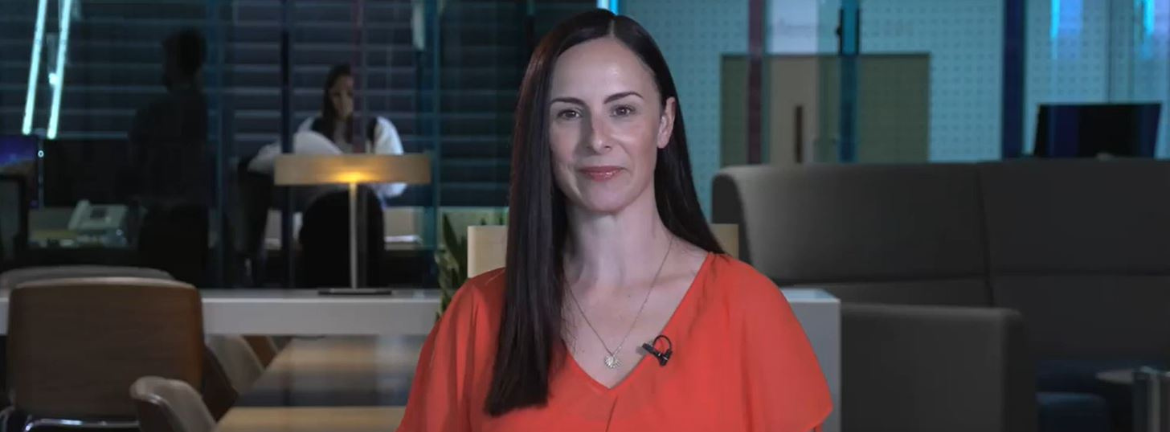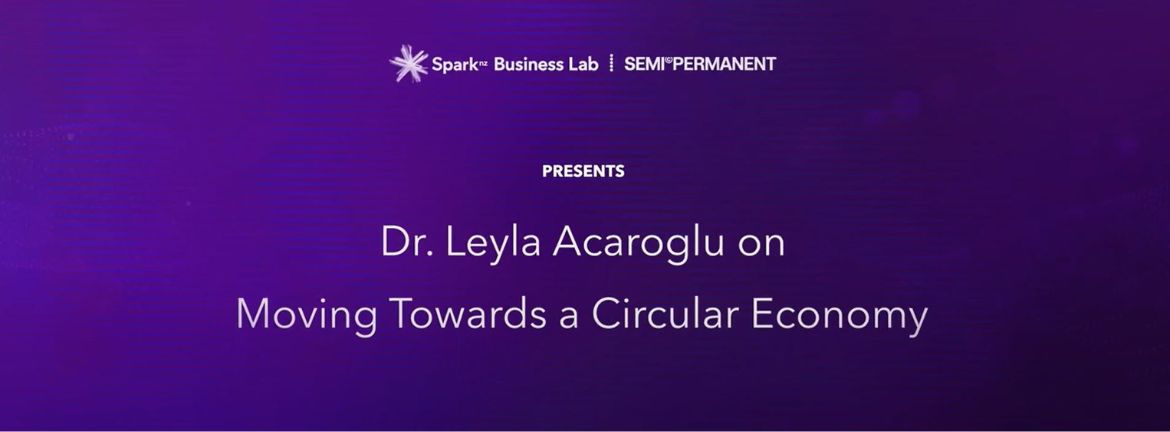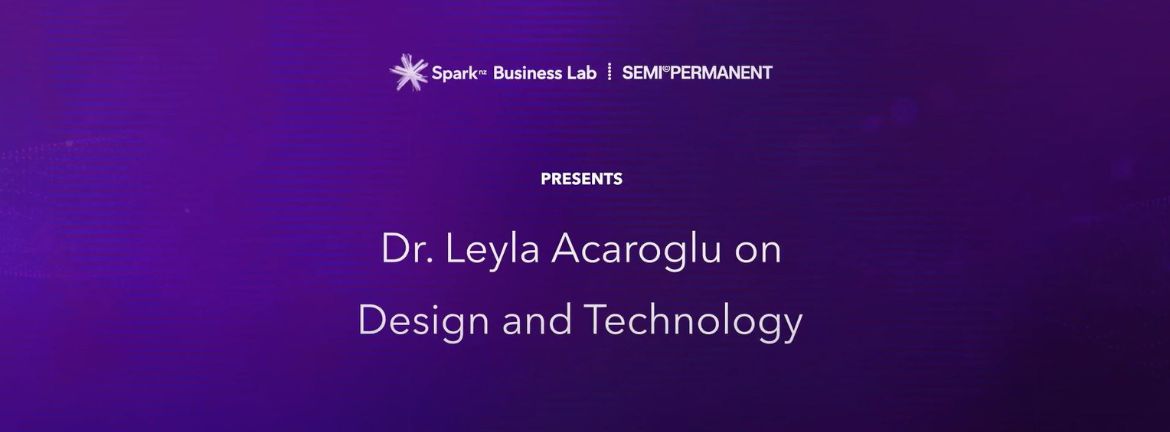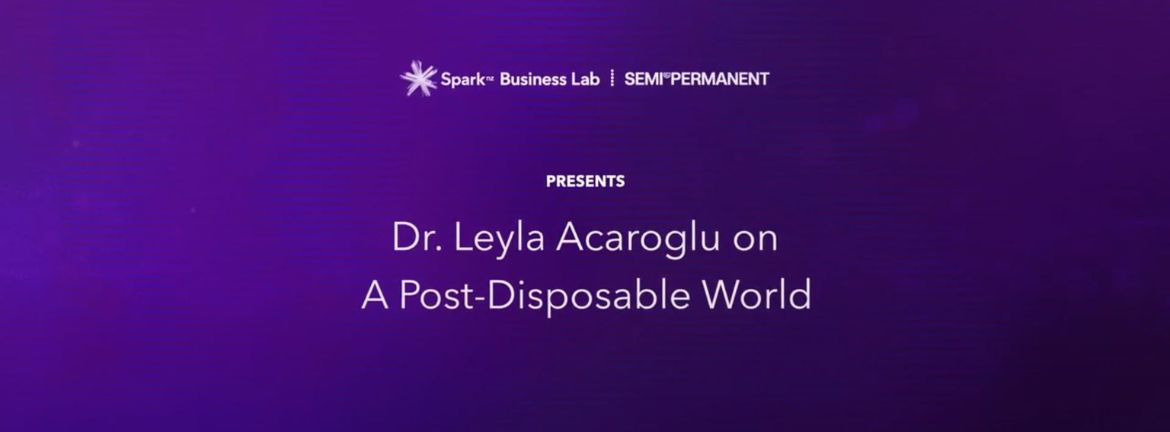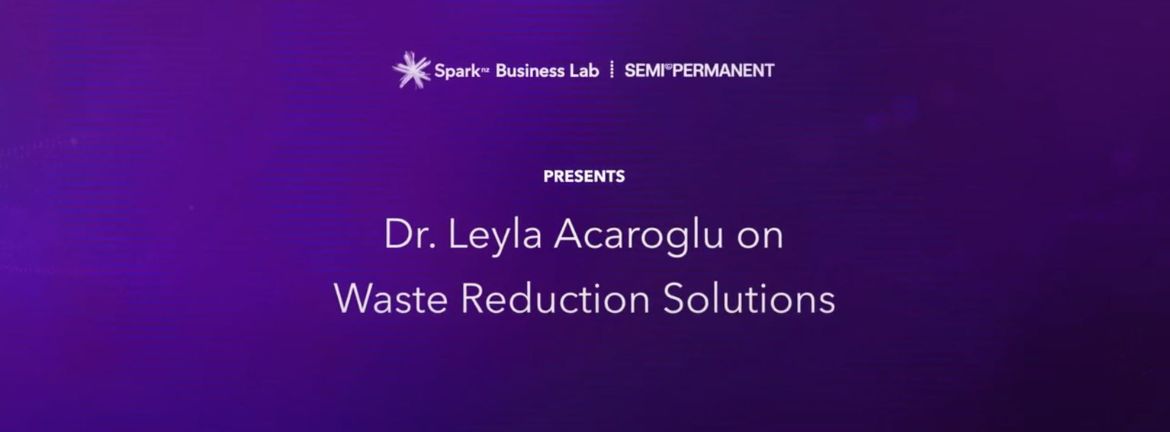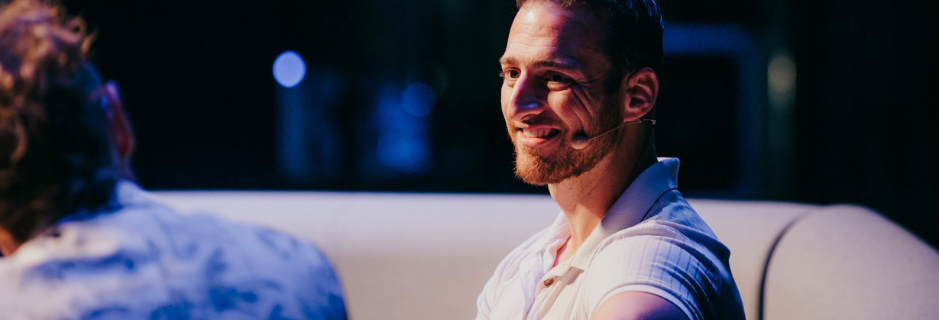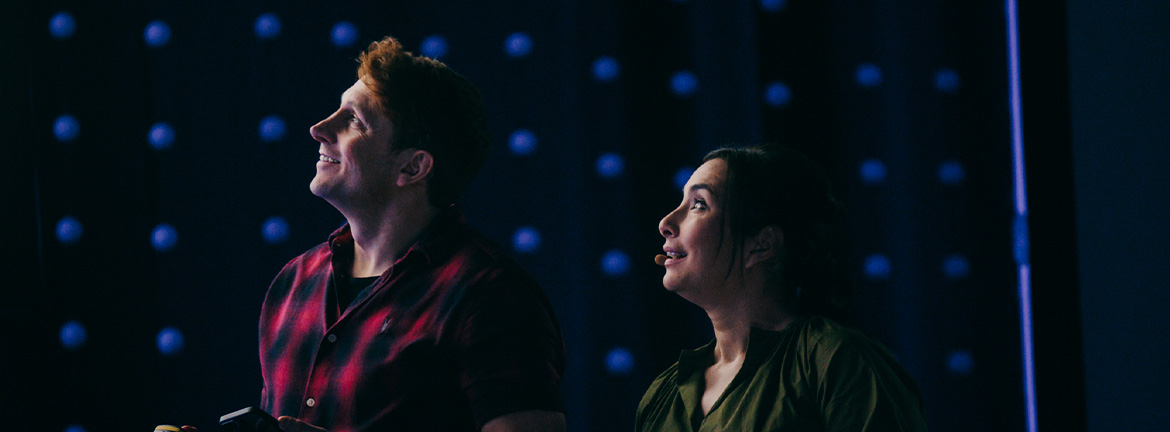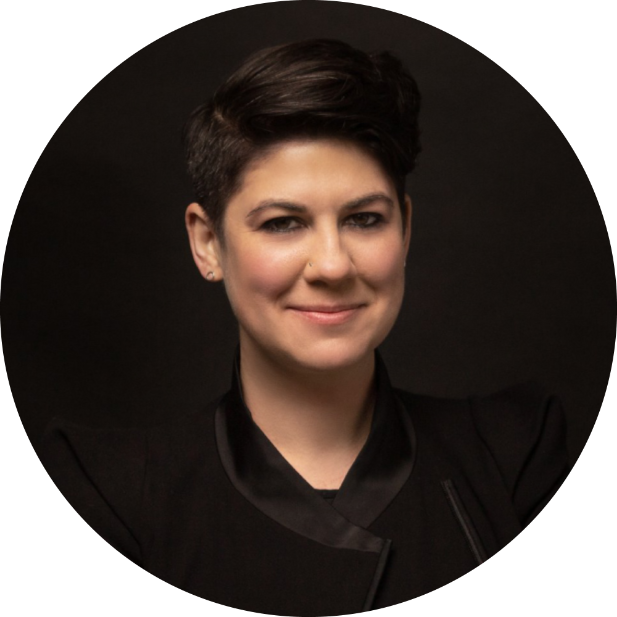
Dr. Leyla Acaroglu
The Unschool & Disrupt Design
A word from Leela Ashford, Corporate Relations & Sustainability Director at Spark
A lot of the social and environmental problems we’re facing are a result of the large amounts of waste generated from a linear economy.
This is the system in which natural resources are extracted to make products that are used until they’re thrown away, as waste.
Dr. Leyla Acaroglu is a leading force in the movement for a sustainable and circular future. She emphasises the use of strategies such as sustainability and the circular economy to replace our current linear waste-based system.
This new system would consist of three principles: eliminating waste, prolonging product lifespan, and restoring and regenerating nature.
Restoring and regenerating nature – a checklist for business leaders
If you answered yes to any of the above, congratulations you already do things with a circular lens.
The challenge moving forward is looking for ways to maintain the value of products and keep them in circulation for longer periods. There is no waste in nature, it’s a concept that humans have introduced.
The problem with our linear system is our natural resources are finite, and we can only keep exploiting the natural world for so long.
“So the goal is to reduce our requirement on nature and to eliminate waste,” says Leyla.
Prioritising products as services
Some businesses are already embracing a circular economic model.
‘MUD Jeans’, for example, is a subscription model for sustainably made jeans where customers rent jeans and return them when the denim is worn out.
They then repair or recycle the jeans, so they’re not burnt or tossed into a landfill. By subscribing, consumers are challenged to rethink how they value products and encouraged to change their habits.
MUD Jeans embodies the three key principles of the circular economy: eliminating waste, prolonging product lifespan, and restoring nature.
Leyla emphasises the need to prioritise products as services and “transform the linear waste-based economy to have our needs met in ways that are sustainable, so we can move into the future."
A beautiful and enjoyable experience
Embracing unified commerce
Design and policy have a huge role to play in how we transition from a linear waste-based economy to a circular and sustainable one.
Leyla notes that design is not just about redesigning a physical product, “but it’s also the business model that delivers that product to the customer".
Embracing a circular economy requires a seamless supply chain experience to avoid counter-productive resistance and achieve the ultimate goal.
Policy, on the other hand, has a difficult balancing act. Effective policy should ensure there are appropriate reporting standards so solutions don’t create bigger problems or unintended consequences.
However, policy should still create conditions that “encourage innovation, transformation and collaboration, so that different competitors are motivated to innovate in a particular way".
France, for example, was the first country to have a Repairability Index to fight premature waste and planned obsolescence of manufactured and commercialised products. Products are scored from zero (bad) to ten (best) on their ability to be repaired.
Manufacturers grade their products against five criteria - availability of technical documents to assist in repair, ease of disassembly, availability of spare parts, price of spare parts and a category for repair issues specific to that group of products.
“That gives consumers, more clarity, more information and more autonomy over the products. We all know how frustrating it is when things break and we need to get them fixed quickly,” says Leyla.
“So these kinds of laws are helping to create those minimum standards, and are incentivising the producers to do better.”
The Ministry for the Environment has information on the climate reporting requirements for a range of public and private sector organisations.
Check out the climate reporting requirements
The Sustainable Business Council also has resources such as a Reporting Toolbox to assist New Zealand businesses with sustainable reporting.
Transforming the way goods move through the economy
"Most of us are good people and want to see a good future so we do things to alleviate our cognitive guilt,” says Leyla.
If businesses can provide seamless design experiences and demonstrate positive outcomes, consumers will feel empowered. This is good design.
Technology can help create these experiences. In particular, Leyla encourages businesses to explore the emerging space of Digital Product Passports.
These passports essentially create a digital twin of a physical product and collect data on events, transactions, and sustainability throughout the product's lifespan.
H&M Group worked with New York tech start-up EON to embed Digital IDs across its products. Customers can scan a QR code on their garment to learn about its sustainability impact, how to prolong the item’s lifecycle and even how to recycle it.
The Group aims to bring more information to customers so they can build trust and encourage participation in circular models.
Many luxury brands are also using blockchain to deliver digital product passports to provide their customers with additional transparency, traceability and product authenticity. They’re also using it as an opportunity to give consumers exclusive updates, access and sneak peeks.
Examples include the Dior ‘B33’ Sneaker Collection, Bulgari’s Serpenti in Art’ Leather Good Collection, Louis Vuitton LV DIAMOND and H. Moser & Cie. Project Genesis.
Leyla states this tool will help transform how goods move through the economy while enabling better data.
From a consumer perspective, nothing is changing except the option of accessing the product’s history. She explains, “You know where the products come from and where they can go so you can make better decisions”.
The European Union and Australia are already looking at rolling out the concept of Digital Product Passports, so Leyla recommends that New Zealand businesses explore how this concept could work for them.
Taking disposability off the table
Imagining a post-disposable future
Disposability is built into the entire economy.
Leyla notes, “Most of our economic success is currently based on designing things to last the shortest time, so they get wasted quickly and people buy new things.”
The concept of a post-disposable future is when we design disposability out of our products, services and processes.
When considering a post-disposable office, Leyla says this would be one where there is “100% organic waste recycling. Find suppliers that are not going to deliver your lunches in disposable packaging, meaning all the catering is done with zero waste."
"It's not about finding recycling solutions, it's actually about eliminating waste to begin with and seeking out those service providers who are taking that action and encouraging those providers so we have more of that available in the system.”
Taking disposability off the table paves the way for how we start to look at our processes and find solutions for reducing and eventually removing waste.
We create the trends
“I’m just one person, my choices won’t change anything” – we’ve all thought this at least once in our lives. We’re used to thinking our choices won’t make a difference because we’re just one person.
However, our choices unknowingly create trends, influenced by the thousands of others who share our preferences. Our choices have incredible power. Leyla says there are so many options for us to create trends that make a difference.
We can say no to buying products with disposable packaging, no to services using cheap labour and no to companies investing in practices harmful to the planet.
"If enough people do that, mark my word, the people making decisions pay attention to those choices,” she says.
The choices we make influence this idea of a post-disposable world and how we’d exist if disposability wasn’t allowed. But Leyla says the key thing here is for businesses to start the conversation and hold space for transformation.
“It’s really about saying, these are problems that exist and we’re not ignoring them. We don’t have all the solutions, but we can start working together to figure out how to get to better solutions.”
Innovation is a constant process
A toast to nature
“Waste is only a lost resource because there’s nothing to do with it, whereas in nature, there’s no such thing as waste.”
Leyla says there’s a lot of innovation scope in this space to use the technology available and apply them to the challenges at hand. “If you take that simple goal of, how do we eliminate waste from our system? And you figure out all the different areas where you're currently producing waste, you can work towards getting to that.”
While she doesn’t believe any company has successfully achieved this yet, she does acknowledge a few innovators who are using technology to their advantage to create circular-based systems.
Service providers such as Amazon have recognised their customers' desire for packaging that both protects their items and reduces waste and materials used.
While they work to eliminate unnecessary packaging, Amazon has been using machine learning and materials innovation to optimise their packaging. This has led to reduced waste and reduced weight which have helped to ultimately reduce Amazon’s carbon emissions.
Since 2015, Amazon has reduced outbound packaging weight by 41% on average per shipment. Avoiding more than 2 million tons of packaging materials.
One of Leyla’s favourite examples is Toast Ale, a beer company that uses waste bread to make beer instead of letting it go to landfill.
Since 2016, Toast Brewing has saved enough slices of bread that stacked together they’d be over four times the height of Mount Everest.
There have been many other brewing companies that have since adopted a similar method, including New Zealand company Citizen.
Circular redesign toolkit
Circular business redesign
Leyla has developed a free circular redesign toolkit for businesses interested in applying systems-based circular economy solutions to their practices.
It’s designed in six stages, supporting a flow from traditional linear thinking to circular and sustainable solutions.
- Understanding the linear model of your current product or system through a lifecycle assessment. Identifying the areas of potential intervention across each life cycle stage.
- Explore which circular business strategies would work for your product or system and work out how you could reconfigure that.
- Looking at sustainable redesign options.
- Ideating a series of propositions before selecting a final idea and converting it into a new circular flow.
- Conducting a quick product or system viability assessment to see how viable the new circular solution is.
“The goal is iteration. You’re not going to come up with one solution right away. If you did, it would be a miracle,” says Leyla.
What is important, is starting those conversations and challenging your team. If you embed this thinking, the whole approach to how waste is looked at will change.
Try out the circular redesign toolkit with your team now
More articles to spark your interest
The future of waste digestion technology
Justin Kamine provides insights on how companies can effectively utilise their waste streams.
Read moreWhat's next?
Hear from Future State speakers Jonnie Penn, Mark Adams and Constantine Gavrykov as they discuss what comes next with the future of technology in regards to AI, brand and business.
Read more
